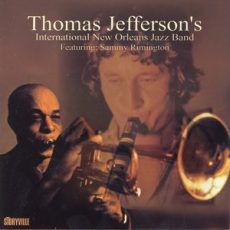
Daily Dose Of Jazz…
Thomas Jefferson was born on June 20, 1920 in Chicago, Illinois. He played drums and French horn while young before switching to trumpet and was strongly influenced by Louis Armstrong. His professional career began when he was 14 playing with Billie and De De Pierce.
He played with Papa Celestin’s orchestra in 1936, as well as with New Orleans jazz musicians Sidney Desvigne and Armand “Jump” Jackson. The 1950s saw him working with Johnny St. Cyr, Santo Pecora, and George Lewis. In 1966, Andrew Morgan recruited Jefferson to play lead trumpet for the Young Tuxedo Brass Band. Subsequently, Jefferson led a jazz band which performed at the New Orleans jazz club Maison Bourbon.
Thomas recorded sparingly as a leader; sessions include dates for Southland Records in the 1960s and Maison Bourbon Records in the 1970s. Jefferson had a cameo as a jazz musician in the 1975 film Hard Times.
Trumpeter Thomas Jefferson, who recorded six albums as a leader and played Dixieland, died in New Orleans, Louisiana on December 13, 1986.
More Posts: bandleader,history,instrumental,jazz,music,trumpet
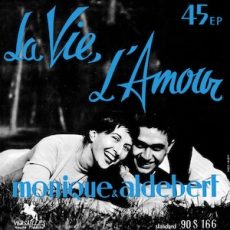
Daily Dose Of Jazz…
Louis Aldebert was born on June 8, 1931 in Ismailia, Egypt. He studied both singing and piano after his family moved to Paris, France and became efficient enough on the latter instrument to gig with tenor saxophonist Don Byas in the mid-1950s. Several years later he played with violinist Stephane Grappelli of Hot Club fame.
Having a career as a singer, he worked with the Blue Stars in the mid-’50s. From 1959-1965 he was a member of the Double Six, a kind of experiment in overcrowding via scat singing. Needless to say, this attracted the attention of Jon Hendricks who made use of Aldebert on a 1965 session.
He married singer Monica Dozo, and after feeling a bias as Byas bandmates, she changed her name to Monique Aldebert-Guerrin. She was part of the rotating Double Six recording cast when some members needed to recover from nagging earaches.
Leaving the Double Six, Byas’ group and the French jazz scene in 1967, the couple moved to America. They initially settled in Las Vegas, Nevada before heading West to Los Angeles, California. They had their own group and did freelance studio vocal work in various capacities, one highlight being a feature on a 1979 side by the Crusaders.
Vocalist, pianist and composer Louis Aldebert, who with his wife collaborated as composers of original songs as well as vocal arrangements of various jazz standards, died on October 10, 2014 in Los Angeles.
More Posts: composer,history,instrumental,jazz,music,piano,vocal
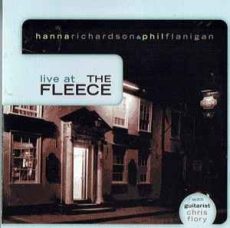
Daily Dose Of Jazz…
Hanna Richardson was born on May 16,1956 in Alexandria, Virginia and as the daughter of a foreign service officer, much of her childhood was spent overseas. At the age of seven, while living in South America, she began piano lessons and also sang at home with the family. 1965 saw her father retiring to Geneva, New York where she met bass player Phil Flanigan while in high school.
College saw her singing professionally, first rock and folk music, then hearing an Ella Fitzgerald record she turned to singing jazz. However, it was the singing style of Maxine Sullivan that was to have the greatest impact upon her. After college, Richardson moved to Rochester, New York and continued to pursue her interest in both folk music and jazz and she also taught herself to play the mandolin.
A move to Syracuse, New York had her working at Syracuse University and becoming Assistant Dean in the School of Management. She sang professionally during this period as a session back-up singer. Connecting again with Flanigan who had toured and recorded with Sullivan, and began singing with him. They married and recorded their debut album, Something To Remember You By, in 2002.
Vocalist Hanna Richardson, who has released a half dozen albums, continues to regionally perform, record and educate.
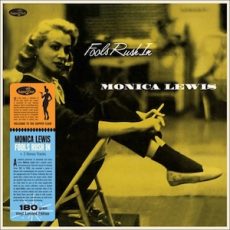
Daily Dose Of Jazz…
Monica Lewis was born May Lewis in Chicago, Illinois on May 5, 1922, the youngest of three children. Her father was a pianist, composer and musical director for CBS, while her mother was a singer with the Chicago Opera Company. She studied voice with her mother and when she was eleven the family moved to New York City due to The Great Depression.
She began singing on radio after a successful audition with WMCA in New York City, which led to her own program. At age seventeen she started working as a singer for a radio show titled Gloom Dodgers in order to support her family while studying at Hunter College. Shortly afterwards Lewis had a radio show titled Monica Makes Music and went on to co-star on The Chesterfield Supper Club radio show.
Winning a part as a singing cigarette girl in the Broadway show Johnny 2X4, her work on Broadway led to performing at the Stork Club. She dropped out of school, changed her name from May to Monica because she thought it was sexier. In 1943 at an audition in Times Square with hundreds of women participating, she earned the part as a singer.
She started singing on Hotel Astor’s roof with Goodman’s orchestra and established her career through nationally broadcast shows. Lewis went on to record for Signature Records, MGM Records, Decca Records, Capitol Records, and Verve Records.
She went on to sing in commercials, became the voice of Miss Chiquita Banana, and appeared on the Toast of the Town which would become the Ed Sullivan Show. It was created and produced by her brother Marlo Lewis.
By 1950 she was signed to a contract with MGM and movies were added to her trades. Over the next three decades she appeared in romantic comedies and disaster films along with television action, crime and western series. Resuming her singing career in the 1980’s and 1990s, she performed at popular clubs in Los Angeles and New York City.
Vocalist Monica Lewis died ten days after an interview with The New Yorker, on June 12, 2015. The article was posthumously published in the September 7, 2015 edition.
More Posts: bandleader,history,instrumental,jazz,music,vocal
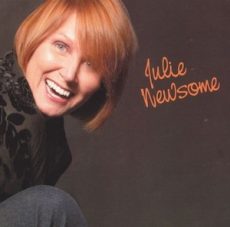
Daily Dose Of Jazz…
Nina Michelle was born on May 1, 1968 in Vancouver, British Columbia, Canada. She began studying classical piano at an early age of 5 and after graduating with honours, she received a scholarship to continue her music studies in the music and vocal program at Capillano University in North Vancouver.
In Vancouver she regularly performed with Linton Garner at Rossinis jazz club. Her many tours to Switzerland with drummer Charly Antolini and his Jazz Power. Since 1994 she’s been touring Europe with some of the finest musicians.
In 1998 Nina recorded a soundtrack with the Billy Gorldt Orchestra as well as acted in a Süddeutsche-Rundfunk film production directed by Oliver Storz, Against the End of the Night. Nina’s current work includes a live big band recording with the Munich Swing Orchestra for the Bayerischer Rundfunk as well as a Swinging Christmas recording produced by Max Greger Jr.
She has performed with several big bands, including SWR Big Band in charge of Max Greger, featuring among other solo artists Benny Bailey and Hugo Strasser.
At the moment, Nina’s performing with her own quartet, an international group of well-acclaimed musicians, among them Canadian bassist Rocky Knauer, Tizian Jost and Guido May.
Vocalist Nina Michelle currently lives in Munich, Germany and continues to perform and record.
More Posts: bandleader,history,instrumental,jazz,music,vocal



